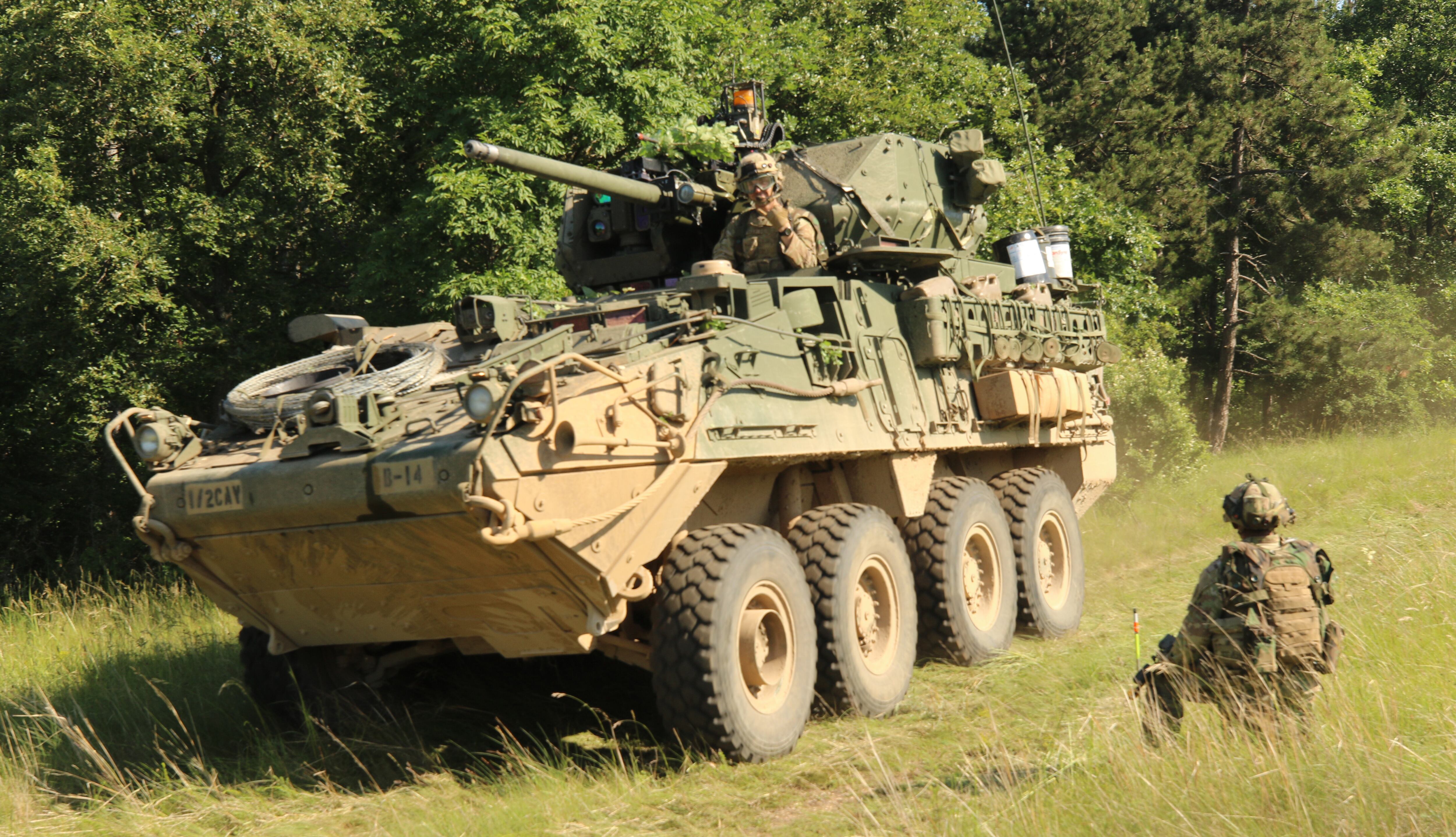Over the past few years, the Army’s 2nd Cavalry Regiment in Germany has seen its Stryker combat vehicles up-gunned and upgraded with better firepower and stronger protection. A recent fielding amid follow-on efforts will give that regiment’s soldiers and their supporting rotational brigade protection from invisible threats.
That’s because the Mounted Assured Position Navigation and Timing System, or MAPS, has been fielded to 62 Strykers in the regiment, with another 339 systems expected next year.
Willie Nelson — the director of the Assured Positioning, Navigation and Timing Cross-Functional Team — and Col. Nickolas Kioutas — project manager for PNT — recently spoke with reporters about both the testing, development and fielding of MAPS and its dismounted version, known as DAPS.
The two systems are key for soldiers to not only navigate but also use weapon systems and communications gear in heavily jammed and spoofing environments.
Some of the most contested spaces with those challenges are in Europe.
The first generation of the MAPS system has replaced then seven GPS antennas with just one, anti-jamming-capable GPS antenna that can distribute information across all systems in a vehicle, Kioutas said.
That iteration has anti-jamming capabilities, a robust GPS receiver and a chip-scale atomic clock.
The system has a seven-element array antenna. If it detects radio frequency energy from one direction that’s attempting to jam a signal, then the array shuts off detection from that general direction but continues to scan the sky for the correct radio frequency signals to communicate.
The clock keeps everything in time if the system is jammed for lengthy periods, Nelson said.
The other threat, spoofing, involves an adversary introducing a decoy-type signal.
Researchers are working on a capability for the next generation of MAPS that provides both anti-jam and anti-spoof capabilities. Testing that capability is scheduled for next year, with fielding expected by 2021.
Even as the first generation is used by troops, the Army can continue to upgrade the system with new capabilities as it comes off the production line. Army leaders will decide next year if the fully fielded MAPS gear will serve as its first generation with upgrades, or a revamped, second variant, Nelson said.
And it’s not just for Strykers.
The next wave of fielding will go to Bradley Infantry Fighting Vehicles, Paladin howitzers and Abrams tanks, which provide the firepower enabled by cavalry formations. And the focus will be to first provide 2nd CR and then the rotational brigade that heads to Europe each year, Kioutas said.
Ultimately, a focused fielding plan will see 20,000 Army vehicles with the new MAPS onboard by 2028, officials said.
For the individual soldiers, the same groups are working on the dismounted version. DAPS does not have an anti-jam capability yet, but it does use the new GPS M-Code signal that has more complicated encryption.
DAPS will replace the existing antenna for the Nett Warrior system, and it is lighter and more effective, Kioutas said.
Nett Warrior is an Android smartphone-based navigation, friendly forces and battlefield chat tool that will connect into the Integrated Visual Augmentation System, a mixed reality goggle expected to tie in communications, navigation, targeting and night vision into an individual soldier’s heads-up display.
Todd South has written about crime, courts, government and the military for multiple publications since 2004 and was named a 2014 Pulitzer finalist for a co-written project on witness intimidation. Todd is a Marine veteran of the Iraq War.








